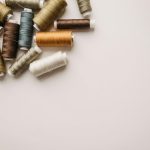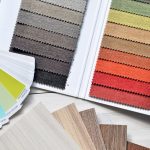Nonwoven textiles are fabrics made by bonding or interlocking fibers through mechanical, chemical, or thermal means, without weaving or knitting. You’ll find them lightweight yet strong, with a unique texture that differs from traditional fabrics. They’re widely used in products like medical supplies, filters, and hygiene items. These fabrics are efficient to produce and can be customized for various needs. If you want to understand their manufacturing, fibers, and uses, there’s plenty more to explore.
Table of Contents
Key Takeaways
- Nonwoven textiles are fabrics bonded through mechanical, chemical, or thermal processes without weaving or knitting.
- They are lightweight, strong, and have a unique texture without traditional thread patterns.
- Common manufacturing methods include spunbond, meltblown, and needle punching techniques.
- Fibers used range from natural options like cotton and wool to synthetics such as polyester and polypropylene.
- Nonwovens are versatile, used in medical supplies, hygiene products, filtration, automotive parts, and construction materials.
Definition and Characteristics of Nonwoven Textiles
Nonwoven textiles are fabrics made by bonding or interlocking fibers through mechanical, chemical, or thermal processes rather than weaving or knitting.
When you handle nonwovens, you’ll notice they’re lightweight yet strong, offering durability without the complexity of traditional textiles. They don’t have the typical thread patterns you see in woven fabrics, giving them a unique texture and feel.
You’ll find these textiles highly versatile, adapting to various uses from medical supplies to filters and hygiene products. Their ability to be engineered for specific properties like absorbency, softness, or barrier protection means you get tailored performance depending on your needs.
Plus, nonwovens often provide cost-effective solutions since their production skips the lengthy weaving or knitting steps, making them practical for many industries.
Common Methods of Manufacturing Nonwoven Fabrics
You’ll find that nonwoven fabrics are made using several key methods, each with its own unique process.
The spunbond technique, meltblown fabric process, and needle punching method are some of the most common approaches.
Let’s take a closer look at how these methods create different types of nonwoven textiles.
Spunbond Technique Overview
Spunbond technology shapes fibers directly from molten polymers, creating strong, lightweight fabrics without the need for weaving or knitting. You’ll find this method efficient and cost-effective for producing durable nonwoven textiles.
Here’s how it works:
- Polymer pellets melt and extrude through spinnerets, forming continuous filaments.
- These filaments cool and solidify as they’re stretched by high-speed air jets.
- The stretched fibers deposit onto a moving conveyor belt, forming a web.
- The web bonds through heat or pressure, creating a strong, uniform fabric.
This process gives you fabrics that are breathable, tear-resistant, and ideal for applications like medical supplies, hygiene products, and geotextiles—all without complex weaving.
Meltblown Fabric Process
Discover how the meltblown fabric process spins ultra-fine fibers by extruding molten polymer through tiny nozzles while high-velocity hot air stretches them into a fine web. You’ll see the fibers bond as they cool, creating a soft, dense nonwoven fabric ideal for filtration and insulation. This technique produces fabrics with smaller fiber diameters than spunbond, enhancing filtration efficiency.
| Feature | Meltblown Fabric |
|---|---|
| Fiber Diameter | 1-5 microns (ultra-fine) |
| Applications | Filters, masks, wipes |
| Fabric Properties | High surface area, fine pore size |
Needle Punching Method
Although meltblown fabric excels in fine filtration, the needle punching method offers a different approach to creating nonwoven textiles by mechanically interlocking fibers.
You’ll find this method useful when you want a durable fabric without relying on adhesives or heat. Here’s how it works:
- Lay down loose fibers to form a web.
- Use barbed needles to punch through the web repeatedly.
- The needles entangle fibers, bonding them together physically.
- The result is a strong, flexible fabric ideal for carpets, geotextiles, and insulation.
This method gives you control over thickness and density, making it versatile.
Plus, it works with natural and synthetic fibers alike, so you can tailor the fabric to your needs efficiently.
Types of Fibers Used in Nonwoven Textile Production
You’ll find nonwoven textiles use a range of fibers, from natural ones like cotton and wool to synthetic options such as polyester and polypropylene.
Choosing the right fiber affects the fabric’s strength, texture, and purpose.
You can also blend different fibers to combine their best qualities for specific applications.
Natural Fiber Varieties
When exploring nonwoven textile production, understanding the natural fiber varieties is essential because they directly impact the fabric’s texture, strength, and environmental footprint.
You’ll find these natural fibers offer biodegradable options that reduce ecological impact while providing unique tactile qualities.
Here are four common natural fibers used in nonwoven textiles:
- Cotton – Soft, breathable, and widely available, it’s ideal for hygiene and medical products.
- Wool – Offers excellent insulation and moisture-wicking, perfect for comfort applications.
- Flax (Linen) – Strong and durable, flax contributes to sturdy nonwoven fabrics.
- Hemp – Known for its robustness and resistance to pests, hemp adds durability and sustainability.
Synthetic Fiber Options
Since synthetic fibers offer consistent quality and specific performance traits, they play an essential role in nonwoven textile production. You’ll often encounter polyester, polypropylene, and nylon as primary synthetic fiber choices.
Polyester is popular for its strength, durability, and resistance to shrinking or stretching. Polypropylene stands out due to its lightweight nature, chemical resistance, and moisture-wicking properties, making it ideal for medical and hygiene products.
Nylon provides excellent elasticity and abrasion resistance, which is vital in industrial applications. Other synthetic fibers like polyethylene and acrylic also find use depending on the desired end-product characteristics.
Fiber Blending Techniques
Although individual fibers bring unique properties to nonwoven textiles, blending different types can enhance performance and functionality even further.
When you blend fibers, you combine strengths like durability, softness, and moisture resistance, creating fabrics tailored to specific needs.
Here are common fiber blending techniques you should know:
- Mechanical Blending – Mixing fibers physically before processing for uniform distribution.
- Chemical Blending – Using adhesives or binders to bond different fibers together.
- Thermal Blending – Combining fibers that melt at different temperatures to fuse them selectively.
- Hydroentangling – Using high-pressure water jets to entangle blended fibers into a cohesive web.
Applications and Uses of Nonwoven Materials
Nonwoven materials offer versatile solutions across many industries, thanks to their unique properties and cost-effectiveness.
When you use nonwovens, you benefit from lightweight, durable, and customizable fabrics ideal for medical supplies like masks and gowns, ensuring hygiene and comfort.
In automotive manufacturing, nonwovens provide sound insulation and lightweight components, improving vehicle efficiency.
You’ll find them in hygiene products such as diapers and wipes, where softness and absorbency matter.
Nonwovens also excel in filtration systems, capturing particles efficiently in air and water filters.
For construction, they act as geotextiles, reinforcing soil and controlling erosion.
Whether you’re packaging delicate items or creating disposable garments, nonwoven textiles offer practical, reliable solutions tailored to your needs without compromising performance or cost.
Advantages and Limitations of Nonwoven Textiles
Choosing nonwoven textiles means tapping into a range of benefits like cost-effectiveness, lightweight design, and quick production.
You’ll find they’re perfect when you need materials that can be produced rapidly without sacrificing performance. However, it’s important to evaluate both advantages and limitations before choosing them for your projects.
Here are key advantages and limitations to assess:
- Cost-Effective: You save money with simpler manufacturing and less material waste.
- Versatile: Nonwovens can be engineered for various properties like absorbency or strength.
- Limited Durability: Compared to woven fabrics, they may wear out faster under heavy use.
- Environmental Concerns: Some nonwovens use synthetic fibers that aren’t biodegradable, impacting sustainability.
Understanding these helps you make smarter choices with nonwoven textiles.
Future Trends and Innovations in Nonwoven Technology
As you explore new materials, you’ll see that innovations in nonwoven technology are rapidly transforming industries from healthcare to automotive.
You’ll find advancements like biodegradable fibers and smart textiles that respond to environmental changes. These developments not only reduce environmental impact but also enhance functionality, such as improved filtration and moisture management.
You’ll also notice increased use of sustainable raw materials and energy-efficient manufacturing processes, aligning with growing eco-conscious demands.
Additionally, digital printing and 3D nonwoven structures are opening new design possibilities, enabling customized applications tailored to specific needs.
Frequently Asked Questions
How Are Nonwoven Textiles Recycled or Disposed of Sustainably?
You can recycle nonwoven textiles by sorting and sending them to specialized facilities that handle synthetic or natural fibers. For sustainable disposal, consider composting biodegradable types or repurposing materials to reduce waste and environmental impact.
What Are the Environmental Impacts of Nonwoven Textile Production?
You’ll face environmental impacts like high water and energy use, chemical emissions, and waste generation during nonwoven textile production. Choosing sustainable materials and efficient processes can help reduce your ecological footprint considerably.
How Do Nonwoven Textiles Compare Cost-Wise to Woven Fabrics?
You might think nonwoven textiles cost less than woven fabrics, and you’d be right! They’re often way cheaper because they skip complex weaving, saving you time and money without sacrificing versatility or performance.
Are Nonwoven Textiles Safe for Medical and Food-Contact Applications?
You can trust nonwoven textiles for medical and food-contact uses because they meet strict safety standards. They resist bacteria and contamination, making them ideal for sterile environments and safe food packaging applications.
Can Nonwoven Textiles Be Dyed or Printed Like Traditional Fabrics?
Imagine splashing vibrant hues onto a blank canvas—yes, you can dye or print nonwoven textiles just like traditional fabrics. Their unique structure absorbs colors well, letting you customize them with creative patterns and bold designs effortlessly.
- How to Tell if Fabric Is Woven or Nonwoven - July 10, 2025
- The Complete Guide to Nonwoven Materials - July 10, 2025
- What Is a Nonwoven Textile? a Broad Definition - July 9, 2025





